Discover 35 hidden attractions, cool sights, and unusual things to do in Beijing (China). Don't miss out on these must-see attractions: Forbidden City, Summer Palace, and Temple of Heaven. Also, be sure to include Zhoukoudian in your itinerary.
Below, you can find the list of the most amazing places you should visit in Beijing (Beijing).
Table of Contents
Forbidden City

Also known as: 故宫
Tourist attraction in Beijing, China. The Forbidden City is a palace complex in Dongcheng District, Beijing, China, at the center of the Imperial City of Beijing. It is surrounded by numerous opulent imperial gardens and temples including the 22-hectare Zhongshan Park, the sacrificial Imperial Ancestral Temple, the 69-hectare Beihai Park, and the 23-hectare Jingshan Park.
The Forbidden City was constructed from 1406 to 1420, and was the former Chinese imperial palace and winter residence of the Emperor of China from the Ming dynasty (since the Yongle Emperor) to the end of the Qing dynasty, between 1420 and 1924. The Forbidden City served as the home of Chinese emperors and their households and was the ceremonial and political center of the Chinese government for over 500 years. Since 1925, the Forbidden City has been under the charge of the Palace Museum, whose extensive collection of artwork and artifacts were built upon the imperial collections of the Ming and Qing dynasties. The Forbidden City was declared a World Heritage Site in 1987.
The complex consists of 980 buildings, encompassing 8,886 rooms and covering 720,000 square metres (72 hectares)/178 acres. The palace exemplifies the opulence of the residences of the Chinese emperor and the traditional Chinese palatial architecture, and has influenced cultural and architectural developments in East Asia and elsewhere. It is listed by UNESCO as the largest collection of preserved ancient wooden structures in the world. Since 2012, the Forbidden City has seen an average of 14 million visitors annually, and received more than 19 million visitors in 2019. In 2018, the Forbidden City's market value was estimated at US$70 billion, making it both the world's most valuable palace and the most valuable piece of real estate anywhere in the world.
Some sources describe it as the largest palace in the world still in existence, but other Chinese imperial residences far exceed it in size, namely the 6.1 km2 (610 ha) Zhongnanhai which lies just west of the Forbidden City, the 2.9 km2 (290 ha) Summer Palace in Haidian District, Beijing, and the 5.6 km2 (560 ha) Chengde Mountain Resort in Chengde, Hebei Province.
The Forbidden City in Beijing is one of the largest and most well-preserved ancient wooden structures in the world. It was listed as the first batch of national key cultural relics in 1961 and listed as a world cultural heritage in 1987.[1]
Address: 4 Jingshan Front St, 100021 Dongcheng Qu (东城区)
Summer Palace
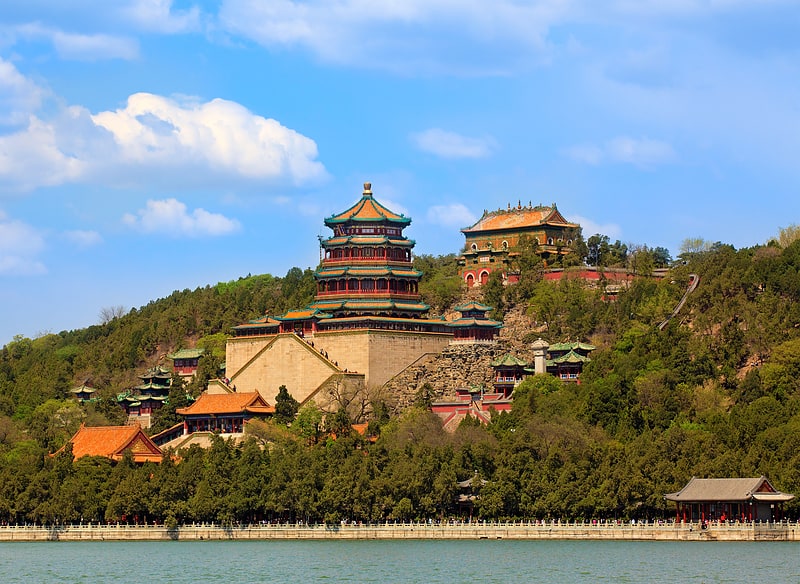
Also known as: 颐和园
Iconic lakeside retreat for royalty. The Summer Palace is a vast ensemble of lakes, gardens and palaces in Beijing. It was an imperial garden in the Qing dynasty. Inside includes Longevity Hill Kunming Lake and Seventeen Hole Bridge. It covers an expanse of 2.9 square kilometres, three-quarters of which is water.
Longevity Hill is about 60 metres (200 ft) high and has many buildings positioned in sequence. The front hill is rich with splendid halls and pavilions, while the back hill, in sharp contrast, is quiet with natural beauty. The central Kunming Lake, covering 2.2 square kilometres (540 acres), was entirely man-made and the excavated soil was used to build Longevity Hill.
Inspired by the gardens in South China, in the Summer Palace there are over 3,000 various Chinese ancient buildings that house a collection of over 40,000 kinds of valuable historical relics from each dynasty.
In December 1998, UNESCO included the Summer Palace on its World Heritage List. It declared the Summer Palace "a masterpiece of Chinese landscape garden design. The natural landscape of hills and open water is combined with artificial features such as pavilions, halls, palaces, temples and bridges to form a harmonious ensemble of outstanding aesthetic value".
Notably in Chinese history, it is also the Central Route terminus of the South-North Water Transfer Project having traversed 1,267 km (787 mi) from Danjiangkou Reservoir, Hubei, making it Beijing's main water supply.[2]
Address: Beiqing Rd, 100091 北京市 (海淀区)
Temple of Heaven

Also known as: 天坛
Famed and historic temple complex. The Temple of Heaven is an imperial complex of religious buildings situated in the southeastern part of central Beijing. The complex was visited by the Emperors of the Ming and Qing dynasties for annual ceremonies of prayer to Heaven for a good harvest. The Temple of Heaven was inscribed as a World Heritage site in 1998 and was described as "a masterpiece of architecture and landscape design which simply and graphically illustrates a cosmogony of great importance for the evolution of one of the world's great civilizations..." as the "symbolic layout and design of the Temple of Heaven had a profound influence on architecture and planning in the Far East over many centuries."[3]
Address: Tiantan N Rd | 天坛东里甲1号, 100050 北京市 (崇文区曲)
Zhoukoudian
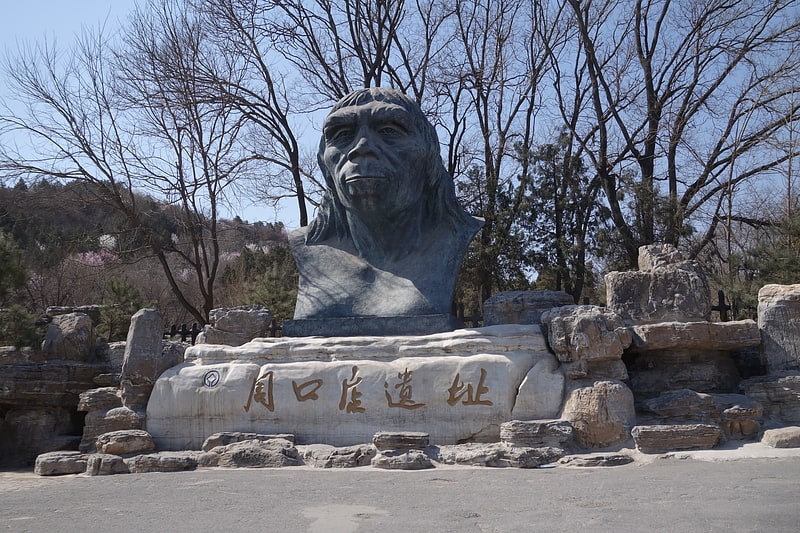
Also known as: 周口店北京人遗址
Peking Man Site. Zhoukoudian Peking Man Site, also romanized as Choukoutien, is a cave system in suburban Fangshan District, Beijing. It has yielded many archaeological discoveries, including one of the first specimens of Homo erectus, dubbed Peking Man, and a fine assemblage of bones of the gigantic hyena Pachycrocuta brevirostris.
Due to differing interpretations of the evidence, proposed dates for when Peking Man inhabited this site vary greatly, with : 700,000-200,000 years ago, 670,000-470,000 years ago and no earlier than 530,000 years ago.
The Peking Man Site was first discovered by Johan Gunnar Andersson in 1921 and was first excavated by Otto Zdansky in 1921 and 1923 unearthing two human teeth. These were later identified by Davidson Black as belonging to a previously unknown species and extensive excavations followed. Fissures in the limestone containing middle Pleistocene deposits have yielded the remains of about 45 individuals as well as animal remains and stone flake and chopping tools.
The oldest animal remains date from as early as 690,000 years ago and tools from 670,000 years ago while another authority dates the tools found from no earlier than 530,000 years ago. During the Upper Palaeolithic, the site was re-occupied and remains of Homo sapiens and its stone and bone tools have also been recovered from the Upper Cave.
The crater Choukoutien on asteroid 243 Ida was named after the location. The caves are located in Zhoukoudian Town, Fangshan District, southwest of central Beijing.[4]
National Museum of China
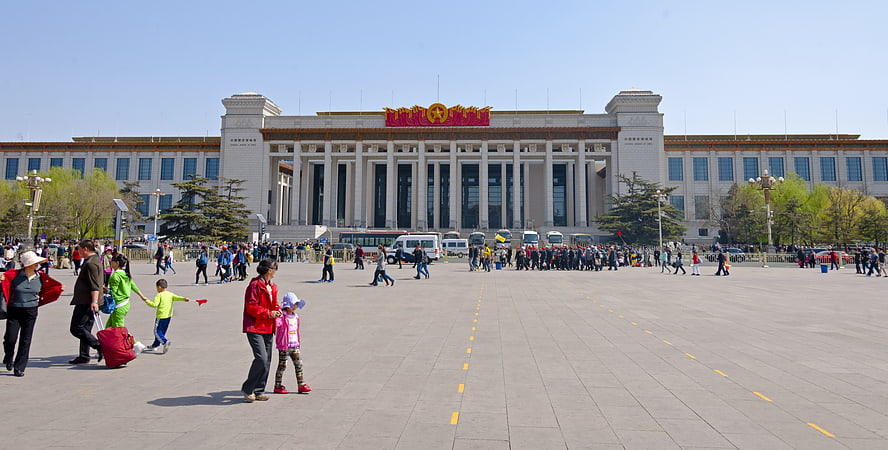
Also known as: 中国国家博物馆
Giant museum of Chinese cultural relics. The National Museum of China flanks the eastern side of Tiananmen Square in Beijing, China. The museum's mission is to educate about the arts and history of China. It is directed by the Ministry of Culture and Tourism of the People's Republic of China.[5]
Address: 16 E Chang'an Ave, Beijing (崇文区曲)
Tiananmen Square
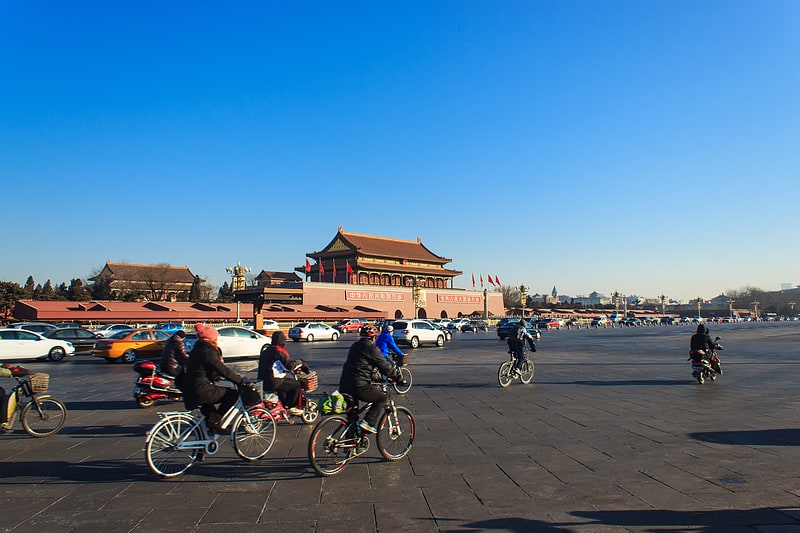
Also known as: 天安门广场
Immense, famed plaza and cultural site. Tiananmen Square or Tian'anmen Square is a city square in the city center of Beijing, China, named after the eponymous Tiananmen located to its north, which separates it from the Forbidden City. The square contains the Monument to the People's Heroes, the Great Hall of the People, the National Museum of China, and the Mausoleum of Mao Zedong. Mao Zedong proclaimed the founding of the People's Republic of China in the square on October 1, 1949; the anniversary of this event is still observed there. The size of Tiananmen Square is 765 x 282 meters. It has great cultural significance as it was the site of several important events in Chinese history.
Outside China, the square is best known for the 1989 protests and massacre that ended with a military crackdown, which is also known as the Tiananmen Square Massacre or the June Fourth Massacre.[6]
Jingshan Park
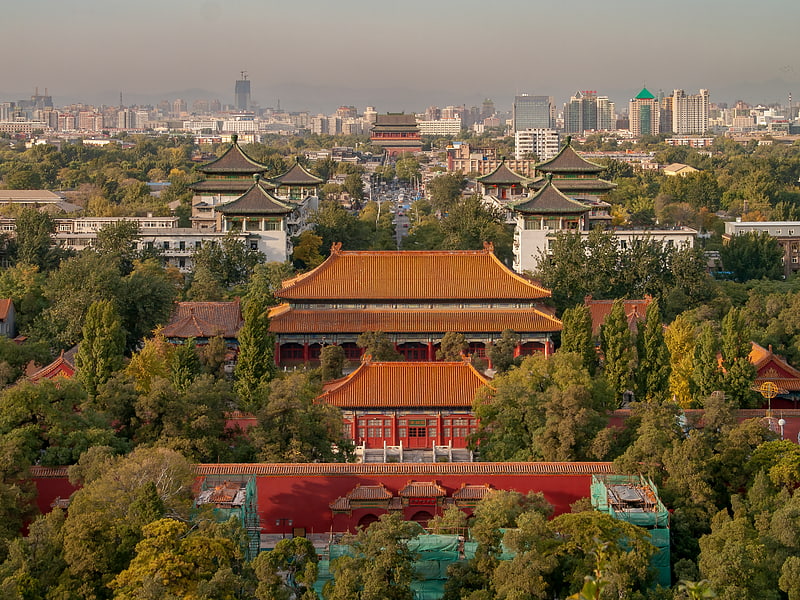
Also known as: 景山公园
City vistas and lush landscapes. Jingshan Park is an imperial park covering 23 hectares immediately north of the Forbidden City in the Imperial City area of Beijing, China. The focal point is the artificial hill Jingshan, literally "Prospect Hill". Formerly a private imperial garden attached to the grounds of the Forbidden City, the grounds were opened to the public in 1928. The park was formally established in 1949. It is listed as a Key State Park and is administratively part of Xicheng District in downtown Beijing.[7]
Address: 44 Jingshan W St, 100009 北京市 (东城区)
Beihai Park
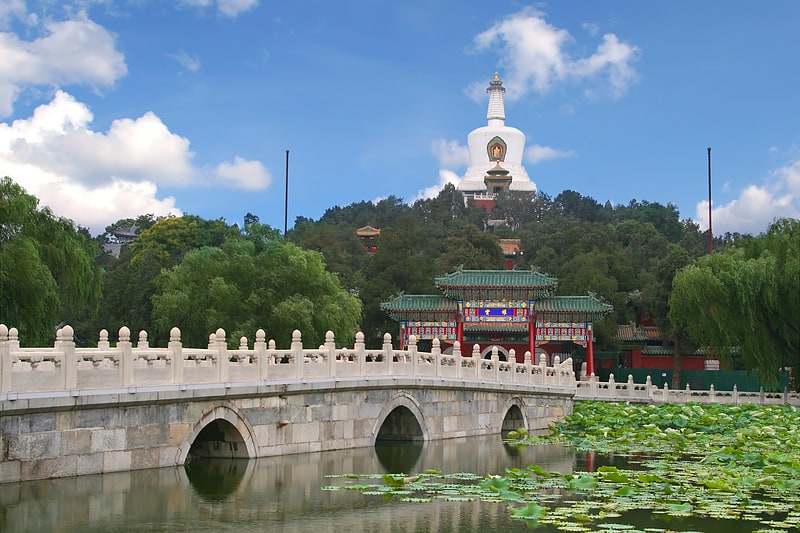
Also known as: 北海公园
Park in Beijing, China. Beihai Park is a public park and former imperial garden located in the northwestern part of the Imperial City, Beijing. First built in the 11th century, it is among the largest of all Chinese gardens and contains numerous historically important structures, palaces, and temples. Since 1925, the place has been open to the public as a park. It is also connected at its northern end to the Shichahai.
The park has an area of more than 69 hectares, with a lake that covers more than half of the entire park. At the center of the park is an island called Jade Flower Island, whose highest point is 32 meters.
Beihai literally means "Northern Sea". There are also corresponding Central and Southern "Seas" elsewhere. These latter two are joined inside a complex of buildings known after them as Zhongnanhai; it is the home of China's paramount leaders.
The Beihai Park, as with many of Chinese imperial gardens, was built to imitate renowned scenic spots and architecture from various regions of China such as Lake Tai, the elaborate pavilions and canals of Hangzhou and Yangzhou, the delicate garden structures in Suzhou and others all served as inspirations for the design of the numerous sites in this imperial garden. The structures and scenes in the Beihai Park are described as masterpieces of gardening technique that reflects the style and the superb architectural skill and richness of traditional Chinese garden art.[8]
Address: 1 Wenjin St, Beijing (东城区)
Military Museum of the Chinese People's Revolution
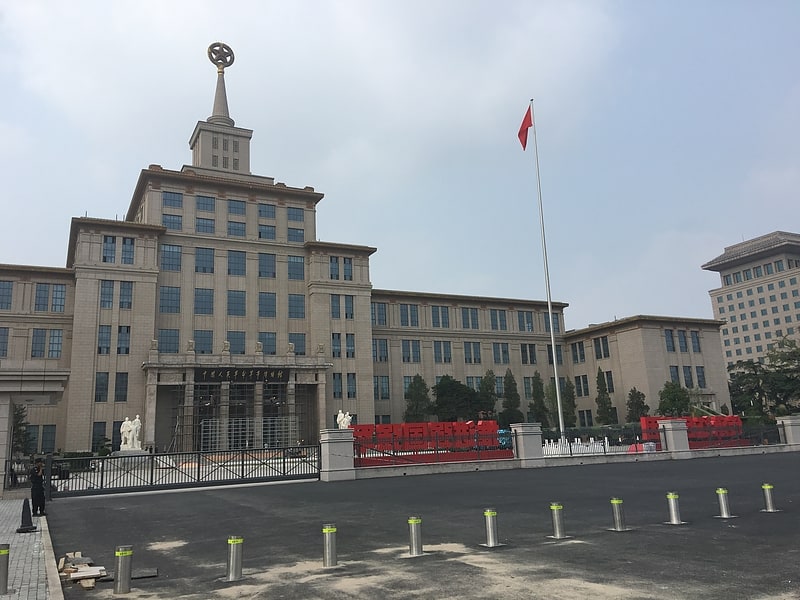
Also known as: 中国人民革命军事博物馆
Museum. The Military Museum of the Chinese People's Revolution or China People's Revolution Military Museum is a museum located in Haidian District, Beijing, China that displays restored military equipment from the history of the People's Liberation Army, up to and including modern-day machinery.
One of the Ten Great Buildings erected in celebration of the ten-year anniversary of the founding of the People's Republic of China, construction of the museum began in October 1958 and ended in 1960.[9]
Address: 9 Fuxing Rd, 100038 北京市 (海淀区)
Yonghe Temple
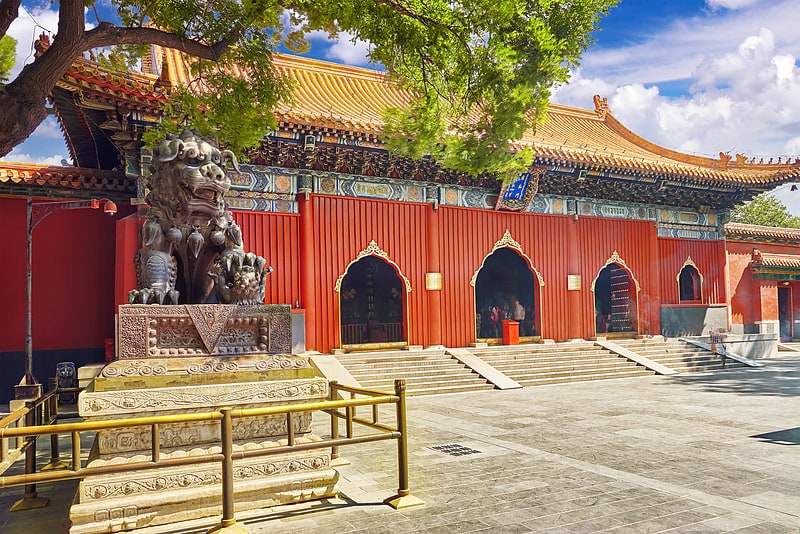
Also known as: 雍和宫
Vibrant Tibetan Buddhist temple complex. The Yonghe Temple, also known as the Yonghe Lamasery, or popularly as the Lama Temple, is a temple and monastery of the Gelug school of Tibetan Buddhism located on 12 Yonghegong Street, Dongcheng District, Beijing, China. The building and artwork of the temple is a combination of Han Chinese and Tibetan styles. This building is one of the largest Tibetan Buddhist monasteries in China proper. The current abbot is Lama Hu Xuefeng.
Yonghe Temple, because Emperor Qianlong was born here, there were two emperors in Yonghe Temple. It became the center of the Qing government in charge of Tibetan Buddhism affairs across the country. Yonghe Temple is the highest Buddhist temple in the country in the middle and late Qing Dynasty.[10]
Address: 12 Yonghegong St, 100007 Dongcheng Qu (东城区)
Old Summer Palace
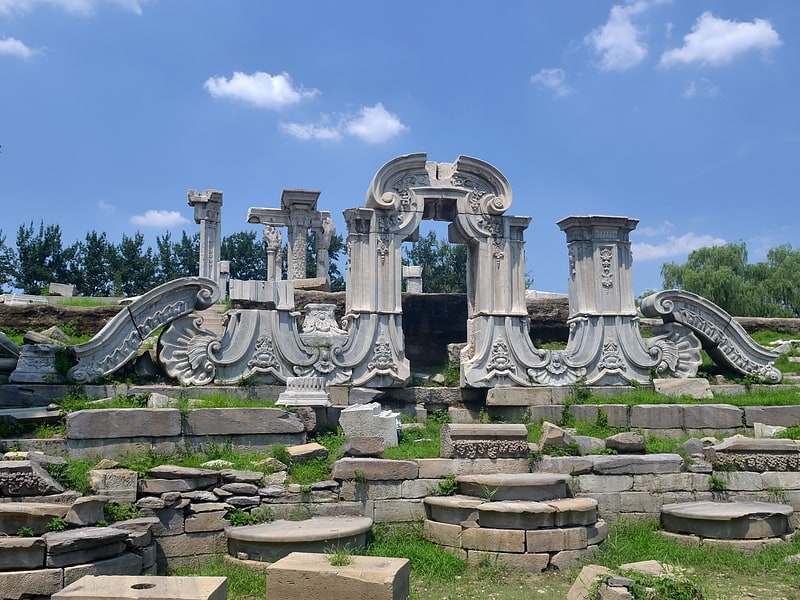
Also known as: 圆明园
Ruins located in a scenic park. The Old Summer Palace, also known as Yuanmingyuan or Yuanmingyuan Park, originally called the Imperial Gardens, and sometimes called the Winter Palace, was a complex of palaces and gardens in present-day Haidian District, Beijing, China. It is 8 kilometres northwest of the walls of the former Imperial City section of Beijing. Widely perceived as the pinnacle work of Chinese imperial garden and palace design, the Old Summer Palace was known for its extensive collection of gardens, its building architecture and numerous art and historical treasures. Constructed throughout the 18th and early 19th centuries, the Old Summer Palace was the main imperial residence of Qianlong Emperor of the Qing dynasty and his successors, and where they handled state affairs; the Forbidden City was used for formal ceremonies. It was reputed as the "Garden of Gardens" in its heyday.
During the Second Opium War, French and British troops captured the palace on 6 October 1860, looting and destroying the imperial collections over the next few days. As news emerged that an Anglo-French delegation had been imprisoned and tortured by the Qing government, with 19 delegation members being killed, the British High Commissioner to China, James Bruce, 8th Earl of Elgin, retaliated by ordering the complete destruction of the palace on 18 October, which was then carried out by troops under his command. The palace was so large – covering more than 3.5 square kilometres (860 acres) – that it took 4,000 men three days to destroy it. Many exquisite artworks – sculptures, porcelain, jade, silk robes, elaborate textiles, gold objects and more – were looted and are now located in 47 museums around the world, according to UNESCO.[11]
Beijing Zoo
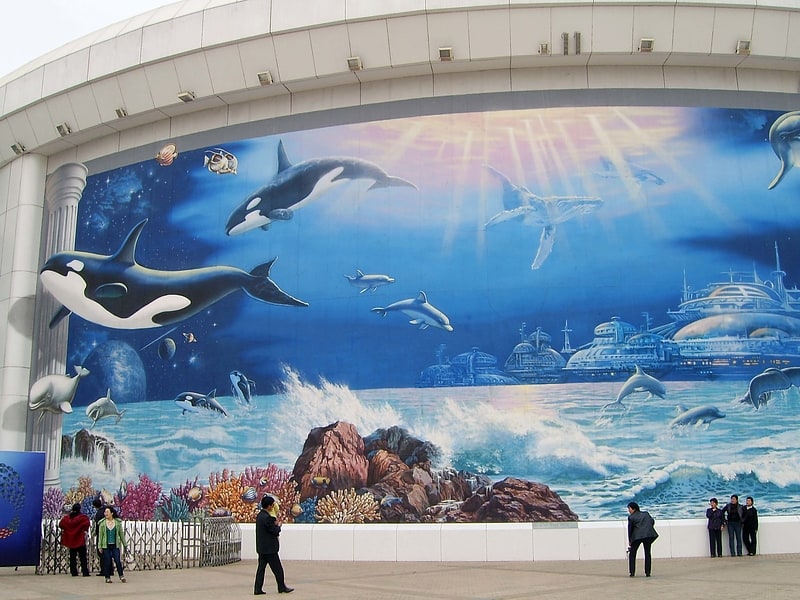
Also known as: 北京动物园
Long-running zoo with giant pandas. The Beijing Zoo is a zoological park in Xizhimen, Xicheng District, Beijing, the capital of the China. Founded in 1906 during the late Qing dynasty, it is the oldest zoo in China and oldest public park in northern China. The zoo is also a center of zoological research that studies and breeds rare animals from various continents.
The zoo occupies an area of 89 hectares (220 acres), including 5.6 hectares (14 acres) of lakes and ponds in Xicheng District. It has one of the largest animal collections in the country. The zoo and its aquarium have over 450 species of land animals and over 500 species of marine animals; in all, it is home to 14,500 animals.
More than five million people visit the zoo each year. Like many of Beijing's parks, the zoo's grounds resemble classical Chinese gardens, with flower beds amidst natural scenery, including dense groves of trees, stretches of meadows, small streams and rivers, lotus pools, and hills dotted with pavilions and historical buildings.
The Beijing Zoo is well known for its collection of rare animals endemic to China including the giant pandas, which are zoo's most popular animals, the red panda (Ailurus fulgens), native to the eastern Himalayas and southwestern China, the golden snub-nosed monkey, South China tiger, white-lipped deer, Pere David's deer, crested ibis, Chinese alligator, and Chinese giant salamander. Other endangered or threatened species housed there include a Siberian tiger, yak, Przewalski's horse, snow leopard, Tibetan gazelle, and kiang. The zoo also has a broad collection of megafauna such as addax, Asian black bears, Asian and African elephants, bats, beluga whales, chimpanzees, clouded leopards, flamingos, gorillas, hippopotamuses, jaguars, kangaroos, lemurs, lions, muntjac, otters, penguins, polar bears, rhinoceroses, sea turtles, tapirs, giraffes and zebras, as well as 13 of the world's 15 species of cranes.[12]
Address: 137 Xizhimen Outer St, 100886 Xicheng Qu (西城区)
Ming tombs
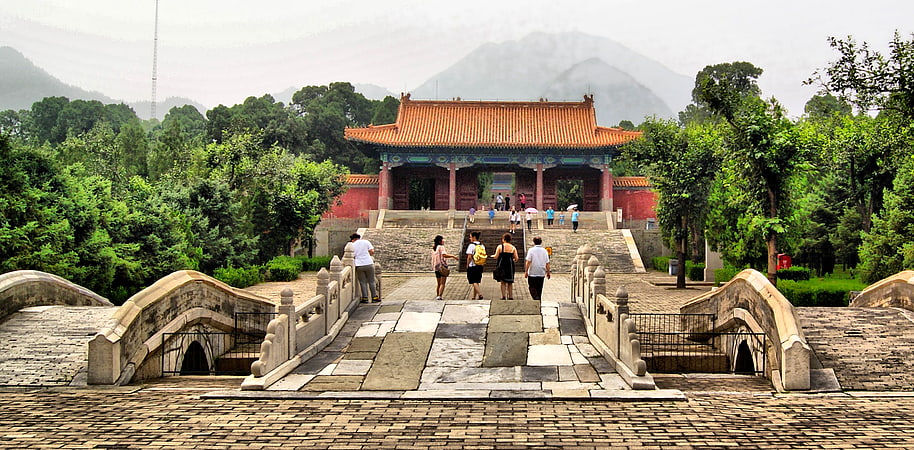
Also known as: 明十三陵
Ancient system of emperor's tombs. The Ming tombs are a collection of mausoleums built by the emperors of the Ming dynasty of China. The first Ming emperor's tomb is located near his capital Nanjing. However, the majority of the Ming tombs are located in a cluster near Beijing and collectively known as the Thirteen Tombs of the Ming dynasty. They are located within the suburban Changping District of Beijing Municipality, 42 kilometers north-northwest of Beijing's city center. The site, on the southern slope of Tianshou Mountain, was chosen based on the principles of feng shui by the third Ming emperor, the Yongle Emperor. After the construction of the Imperial Palace in 1420, the Yongle Emperor selected his burial site and created his own mausoleum. The subsequent emperors placed their tombs in the same valley.
From the Yongle Emperor onwards, thirteen Ming emperors were buried in the same area. The Xiaoling Mausoleum of the first Ming emperor, the Hongwu Emperor, is located near his capital Nanjing; the second emperor, the Jianwen Emperor, was overthrown by the Yongle Emperor and disappeared, without a known tomb. The "temporary" emperor, the Jingtai Emperor, was also not buried here, as the Tianshun Emperor had denied him an imperial burial; instead, the Jingtai Emperor was buried west of Beijing. The last emperor buried at the location was Chongzhen, the last of his dynasty, who committed suicide by hanging on April 25, 1644. He was buried in his concubine Consort Tian's tomb, which was later declared as an imperial mausoleum Siling by the emperor of the short-lived Shun dynasty, Li Zicheng, with a much smaller scale compared to the other imperial mausoleums built for Ming emperors.
During the Ming dynasty, the tombs were off limits to commoners, but in 1644 Li Zicheng's army ransacked and burned many of the tombs before advancing to and subsequently capturing Beijing in April of that year.
In 1725, the Yongzheng Emperor bestowed the hereditary title of marquis on a descendant of the Ming imperial family, Zhu Zhilian, who received a salary from the Qing government and whose duty was to perform rituals at the Ming tombs. He was posthumously promoted to Marquis of Extended Grace in 1750 by the Qianlong Emperor, and the title passed on through twelve generations of Ming descendants until the end of the Qing dynasty.
Presently, the Ming tombs are designated as one of the components of the World Heritage Site, the Imperial Tombs of the Ming and Qing Dynasties, which also includes a number of other locations near Beijing and in Nanjing, Hebei, Hubei, Liaoning province.[13]
Address: Ming Shisan Ling Area, Changling Town, 102213 北京市
Beijing Botanical Garden
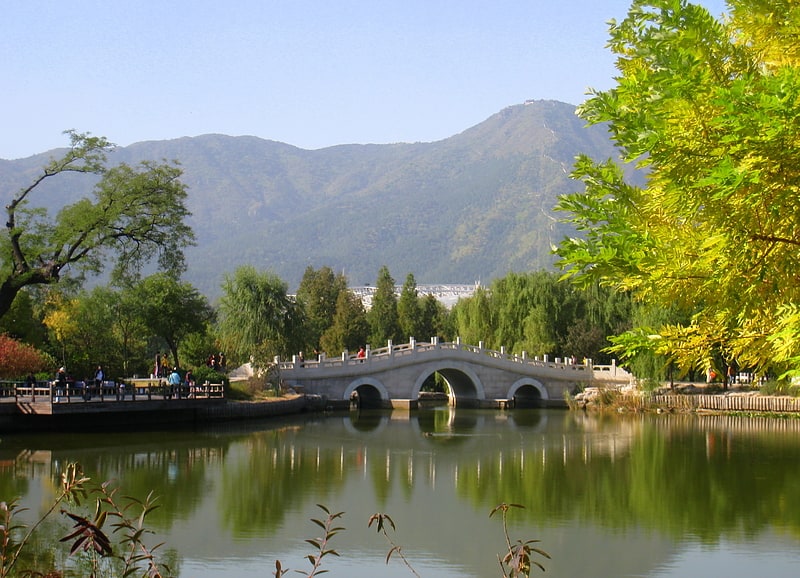
Also known as: 北京植物园
Big botanical garden with diverse plants. The Beijing Botanical Garden is a botanical garden situated in the northwestern outskirts of Beijing, China between Xiangshan Park and Jade Spring Mountain in the Western Hills.[14]
Marble Boat
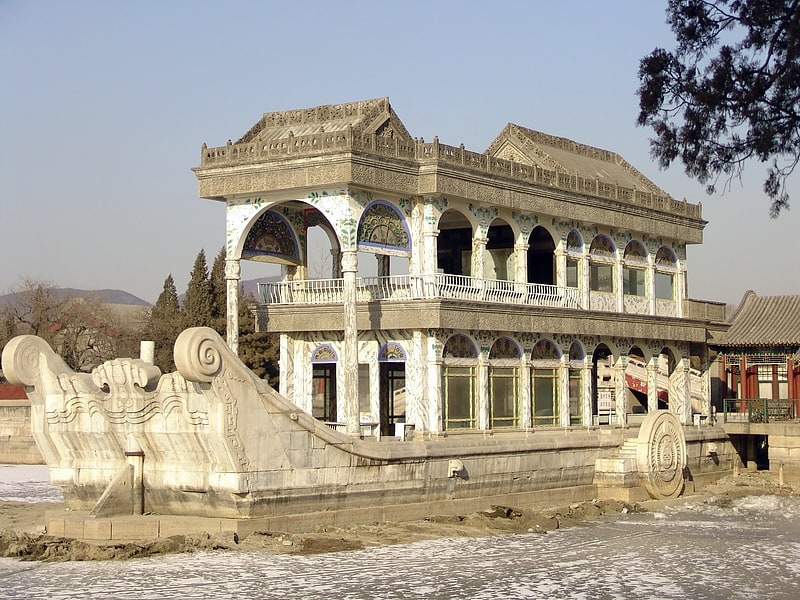
Also known as: 石舫
Education in Beijing. The Marble Boat, also known as the Boat of Purity and Ease, is a lakeside pavilion on the grounds of the Summer Palace in Beijing, China.
It was first erected in 1755 during the reign of the Qianlong Emperor. The original pavilion was made from a base of large stone blocks which supported a wooden superstructure done in a traditional Chinese design.
In 1860, during the Second Opium War, the pavilion was burnt on the orders of Lord Elgin. It was restored in 1893 on order of Empress Dowager Cixi. In this restoration, a new two-story superstructure was designed which incorporated elements of European architecture. Like its predecessor, the new superstructure is made out of wood but it was painted to imitate marble. On each "deck", there is a large mirror to reflect the waters of the lake and give an impression of total immersion in the aquatic environment. Imitation paddlewheels on each side of the pavilion makes it look like a paddle steamer. The pavilion has a sophisticated drainage system which channels rainwater through four hollow pillars, which is finally released into the lake through the mouths of four dragonheads.
The boat design of the pavilion may relate to a quote attributed to Wei Zheng, a Tang dynasty chancellor. He is said to have told Emperor Taizong that "the waters that float the boat can also capsize it", implying that the Chinese people can not only support an emperor, but can also topple him. With this in mind, the Qianlong Emperor might have chosen to construct the Marble Boat as an auspicious symbol of a stable reign.
The Marble Boat is often seen as an ironic commentary on the fact that the money used to restore the Summer Palace largely came from funds originally earmarked for building up a new imperial navy. The controller of the Admiralty, Prince Chun, owed much of his social standing as well as his appointment to Empress Dowager Cixi, who had adopted his eldest son, Zaitian, who was enthroned as the Guangxu Emperor. Because of this, he probably saw no other choice than to condone the embezzlement.
The pavilion is 36 meters in length and stands on the northwestern shore of Kunming Lake, near the western end of the Long Corridor.[15]
Xiyang Lou
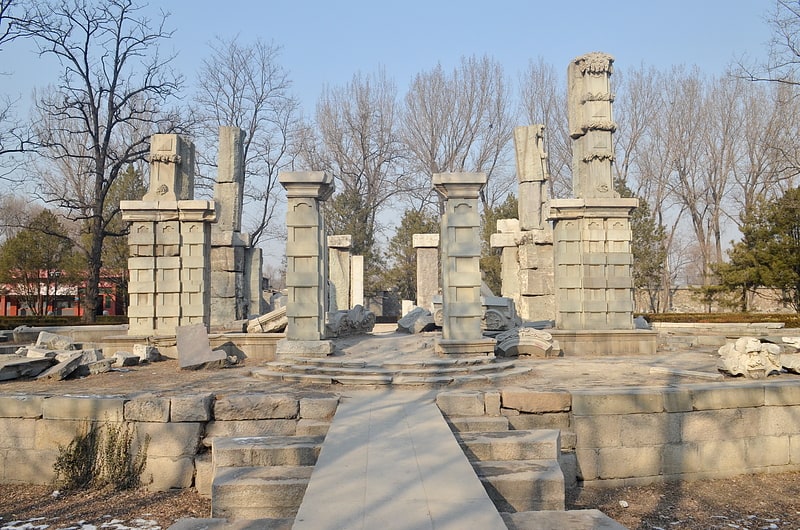
Xiyang Lou, are ruins of 18th-century European-style imperial buildings on the grounds of the Old Summer Palace in Beijing, China. They are located in the northern part of the Changchun Yuan, one of the three gardens which once made up the Old Summer Palace, and cover an area of about 7 hectares.[16]
Beijing Ancient Observatory

Also known as: 北京古观象台
Historic site for stargazing. The Beijing Ancient Observatory is a pretelescopic observatory located in Beijing, China. The observatory was built in 1442 during the Ming dynasty, and expanded during the Qing. It received major reorganization and many new, more accurate instruments from Europeans in 1644.
As one of the oldest observatories in the world, the Beijing Ancient Observatory grounds cover an area of 10,000 square meters. The observatory itself is located on a 40 by 40 wide meter on a 15 meter tall brick tower, an extant portion of the old Ming dynasty era city wall that once encircled Beijing. Several of the bronze astronomical instruments are on the platform, and other armillary spheres, sundials, and other instruments are located nearby at ground level. It is operated as a museum in affiliation with the Beijing Planetarium.[17]
Address: 2 Dongbiaobei Hutong (东裱褙胡同2号; Dōngbiǎobèihútòng), Beijing (朝阳区)
Long Corridor
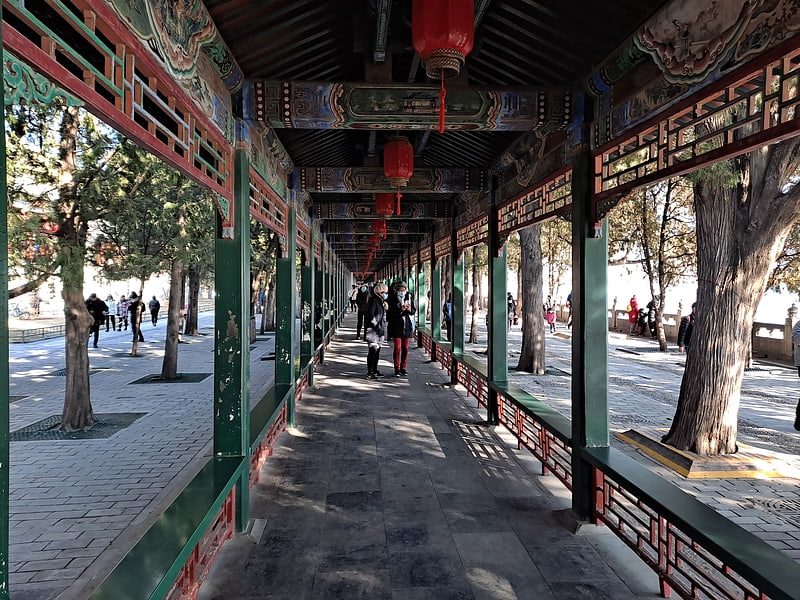
Also known as: 长廊
Scenic spot in Beijing, China. The Long Corridor is a covered walkway in the Summer Palace in Beijing, China. First erected in the middle of the 18th century, it is famous for its 728 m length in conjunction with its rich painted decoration.[18]
Palace of Heavenly Purity
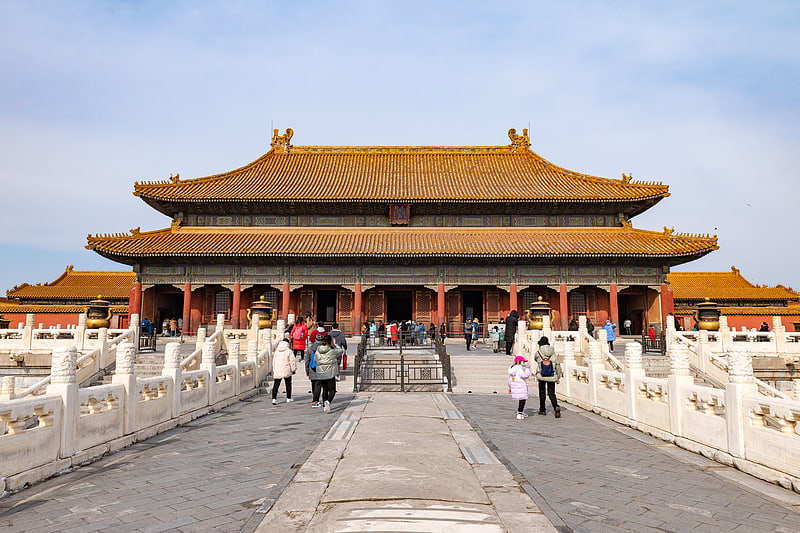
Also known as: 乾清宫
Historic palace drawing busy crowds. The Palace of Heavenly Purity, or Qianqing Palace is a palace in the Forbidden City in Beijing, China. It is the largest of the three halls of the Inner Court, located at the northern end of the Forbidden City. During the Qing dynasty, the palace often served as the Emperor's audience hall, where he held council with the Grand Council.
The Palace of Heavenly Purity is a double-eaved building, and set on a single-level white marble platform. It is connected to the Gate of Heavenly Purity to its south by a raised walkway. In the Ming dynasty, it was the residence of the Emperor. The large space was divided into nine rooms on two levels, with 27 beds. For security, on any one night the Emperor would randomly choose from any of these beds. This continued through the early Qing dynasty. However, when the Yongzheng Emperor ascended the throne, he did not wish to inhabit the palace occupied by his father for 60 years. He and subsequent emperors lived instead at the smaller Hall of Mental Cultivation to the west. The Palace of Heavenly Purity then became the Emperor's audience hall, where he held court, received ministers and emissaries, and held banquets. At the centre of the Palace, set atop an elaborate platform, is a throne and a desk, on which the Emperor wrote notes and signed documents during councils with ministers. A caisson is set into the roof, featuring a coiled dragon.
Above the throne hangs a tablet with a right-to-left script reading zhèng dà guāng míng (正大光明), penned by the Shunzhi Emperor. This tablet has been translated several ways but the loose transliteral meaning is "let the righteous shine". It is often used as a Chinese idiom, meaning "to be decent, honest and magnanimous," or "to have no secret or do a shameless deed." Beginning with the Yongzheng Emperor, who himself had ascended the throne amid a succession dispute, Qing dynasty emperors had designated their heirs in secret, with one copy of the will hidden behind this tablet and another carried at all times by the Emperor himself.[19]
Address: 4 Jingshan Front St, Beijing (东城区)
Wangfujing
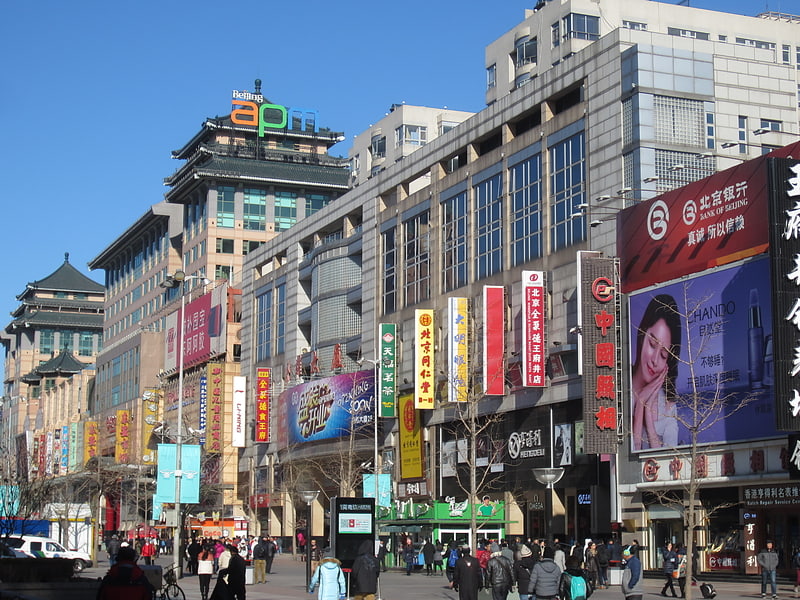
Also known as: 王府井大街
Street in Beijing, China. Wangfujing is a shopping street in Beijing, China, located in Dongcheng District. The majority of the main area is pedestrianised. Since the middle of the Ming Dynasty there have been commercial activities in the area. In the Qing Dynasty, ten aristocratic estates and princess residence were built here, soon after when a well full of sweet water was discovered, thereby giving the street its name "Wang Fu", "Jing". Many exotic foods are served on Wangfujing snack street.[20]
Drum Tower

Also known as: 北京鼓楼和钟楼
Historic red clock tower. The Drum Tower of Beijing, or Gulou, is situated at the northern end of the central axis of the Inner City to the north of Di'anmen Street. Originally built for musical reasons, it was later used to announce the time and is now a tourist attraction.
The Bell Tower of Beijing (traditional Chinese: 鐘樓; simplified Chinese: 钟楼; pinyin: Zhōnglóu), stands closely behind the drum tower. Together, the Bell Tower and Drum Tower have panoramic views over central Beijing and before the modern era, they both dominated Beijing's ancient skyline.[21]
Address: 9 Zhonglouwan Linzi, 100009 北京市 (东城区)
National Centre for the Performing Arts
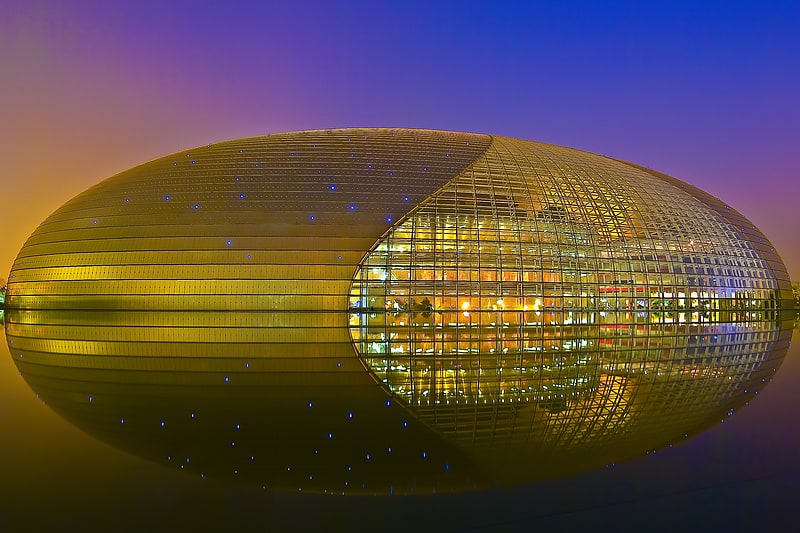
Also known as: 国家大剧院
Performance hall with dramatic design. The National Centre for the Performing Arts, and colloquially described as The Giant Egg, is an arts centre containing an opera house in Beijing, People's Republic of China. Designed by French architect Paul Andreu, the NCPA opened in 2007 and is the largest theatre complex in Asia. The NCPA is semi-spherical in appearance, with a long axis length of 212.20 meters in the east-west direction, a short axis length of 143.64 meters in the north-south direction, a height of 46.285 meters, an area of 119,900 square meters, and a total construction area of approximately 165,000 square meters, including 105,000 square meters of main buildings and 60,000 square meters of underground, auxiliary facilities, with a total cost of 3.067 billion yuan. There are Opera hall, Music hall, theater and art exhibition halls, restaurants, audio shops, and other supporting facilities.[22]
Address: Beijing, No.2 West Chang'an Avenue, Xicheng District, Beijing
Palace Museum

Also known as: 故宫博物院
Museum in Beijing, China. The Palace Museum is a national museum housed in the Forbidden City at the core of Beijing. It was established in 1925 after the last Emperor of China was evicted from his palace, and opened its doors to the public.
Constructed from 1406 to 1420, the museum consists of 980 buildings and covers 72 hectares (over 180 acres). It is home to over 1.8 million pieces of art, mostly from the imperial collection of the Ming and Qing dynasties. The 20th century saw its expansion through new acquisitions, transfers from other museums, and new archaeological discoveries.
According to the Beijing Evening Post, the museum has seen more than 17 million visitors in 2018, which would make it the world's most visited museum. It has an average of 15 million visitors annually since 2012. Due to this increased pressure, the management has set a daily limit for visitors of 80,000 since 2015 to protect the structure and the experience.[23]
Chinese Aviation Museum
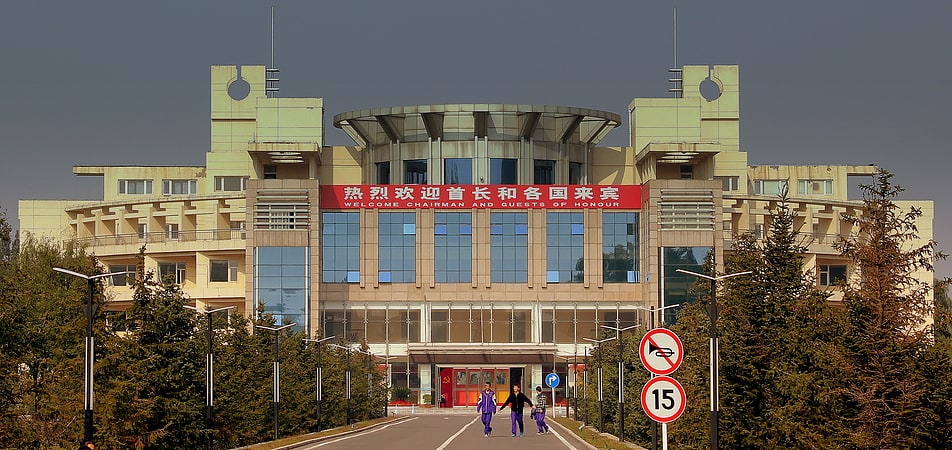
Also known as: 中国航空博物馆
Exhibits of 200+ historic aircraft. The Chinese Aviation Museum, sometimes referred to as the China Aviation Museum and the Datangshan Aviation Museum, is an aviation museum in Changping District, Beijing, China. The museum was first opened to the public on 11 November 1989, to celebrate the 40th anniversary of the founding of the People's Liberation Army Air Force.
The museum is located 40 km (25 mi) north of Beijing city.
Part of the museum is located inside a cave in the side of Datangshan Mountain. The cavern was originally part of the tunnels and underground bunker system of Shahezhen Airbase, and is 586 metres (1,905 ft) long by 11 metres (36 ft) high by 40 metres (130 ft) wide. The road leading to the museum is actually also used as a taxiway between the base and bunker system.[24]
Zhongshan Park
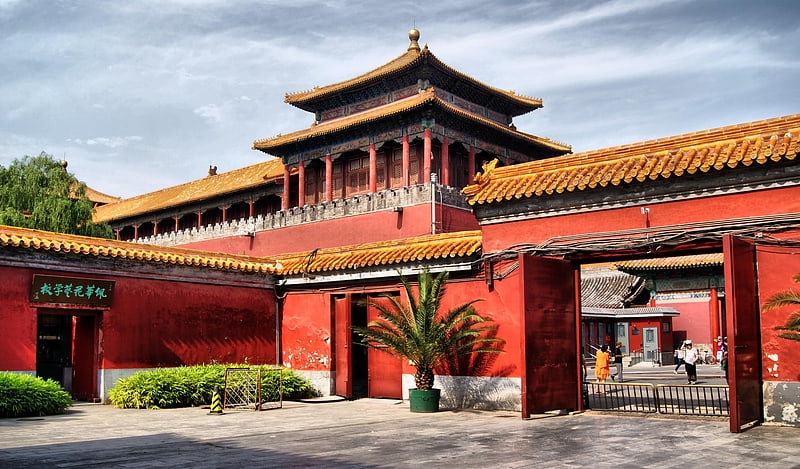
Also known as: 北京中山公园
Park in Beijing, China. The Zhongshan Park is a former imperial altar and now a public park that lies just southwest of the Forbidden City in the Imperial City, Beijing.
Of all the gardens and parks surrounding the Forbidden City, such as the Beihai and Jingshan, Zhongshan is arguably the most centrally located of them all. The Zhongshan Park houses numerous pavilions, gardens, and imperial temples such as the Altar of Earth and Harvests or Altar of Land and Grain in some translations (Shejitan, 社稷坛), which was built in 1421 by the Yongle Emperor, and it symmetrically opposite the Imperial Ancestral Temple, and is where the emperors of Ming and Qing dynasties made offerings to the gods of earth and agriculture. The altar consists of a square terrace in the centre of the park.
By 1914, the altar grounds had become a public park known as the "Central Park". That park was then further renamed in 1928 after Sun Yat-Sen (Zhongshan Park), in memory of China's first revolutionary political leader who helped bring about the first republic era in 1911, which is what the park is known as today. Many parks in China during that period also took on this name (see Zhongshan Park).
The Zhongshan Park includes various halls and pavilions built for the members of the imperial family, stone archways and a greenhouse which houses fresh flowers on display all year round. The greenhouse includes 39 varieties of tulips presented to the park in 1977 by the Princess of Holland.[25]
Silk Street
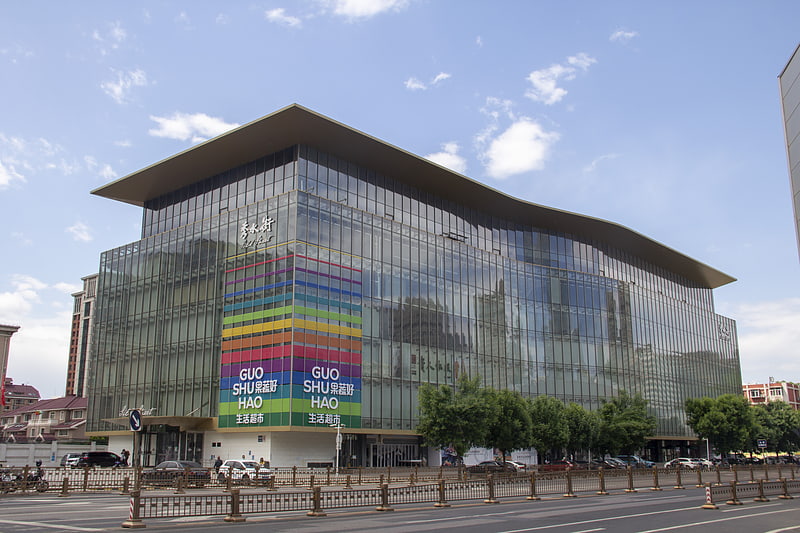
Also known as: 秀水街
Shopping center in Beijing, China. Silk Street, aka Silk Market or Silk Street Market, is a shopping center in Chaoyang District, Beijing, that accommodates over 1,700 retail vendors, notorious among international tourists for their wide selection of counterfeit designer brand apparel. The Silk Street is located at Yonganli, just west of the China World Trade Centre and is accessible by subway and bus.
The Silk Street attracts approximately 20,000 visitors daily (from 9am to 9pm) on weekdays and between 50,000 and 60,000 on weekends as of 2006. This 35,000-square-meter complex houses 1,700 retail vendors and over 3,000 salespeople spread over seven floors with three levels of basements. Many of the stalls have, over the years, gained local and international reputation for selling counterfeit luxury designer brands at relatively low prices. Some have carried on this trademark despite growing pressures from the management, the Chinese government and famous brand-name companies.[26]
Address: 8 Xiushui E St, Beijing (朝阳区)
Monument to the People's Heroes

Also known as: 人民英雄纪念碑
Monument built for Communist martyrs. The Monument to the People's Heroes is a ten-story obelisk that was erected as a national monument of China to the martyrs of revolutionary struggle during the 19th and 20th centuries. It is located in the southern part of Tiananmen Square in Beijing, in front of the Mausoleum of Mao Zedong. The obelisk monument was built in accordance with a resolution of the First Plenary Session of the Chinese People's Political Consultative Conference adopted on November 30, 1949, with construction lasting from August 1952 to May 1958. The architect of the monument was Liang Sicheng, with some elements designed by his wife, Lin Huiyin. The civil engineer, Chen Zhide was also instrumental in realizing the final product.
The monument has also served as the center of large-scale mourning activities that later developed into protest and unrest, such as the deaths of Premier Zhou Enlai (which developed into the Tiananmen Square protests of 1976) and Hu Yaobang (which later developed into the Tiananmen Square protest of 1989, which was claimed as an anti-government movement by the Communist Party at that time).[27]
Address: Tian'anmen Square, 100001 北京市 (崇文区曲)
Paleozoological Museum of China
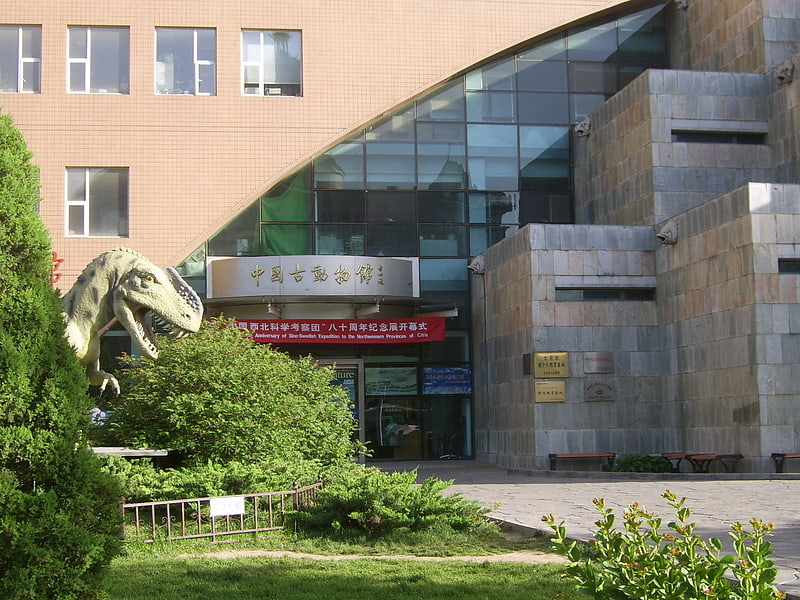
Also known as: 中国古动物馆
Museum in Beijing, China. The Paleozoological Museum of China is a museum in Beijing, China. The same building also houses the Institute of Vertebrate Paleontology and Paleoanthropology of the Chinese Academy of Sciences. The museum contains exhibition halls with specimens aimed at the public, while the rest of the building is used for research purposes.[28]
Badachu
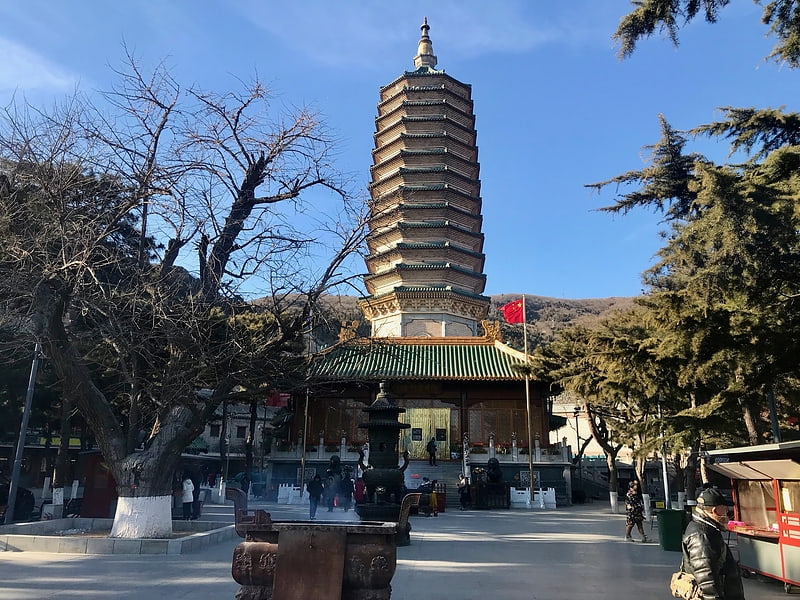
Also known as: 八大处
Tourist attraction in Beijing. The Badachu, is a complex of monasteries located on the outskirts of urban Beijing, which means "Eight Great Sites" that refers to the eight Buddhist temples and nunneries scattered across the Cuiwei, Pingpo, and Lushi hills in Shijingshan District, at the foot of Beijing's Western Hills. Badachu also famous for its twelve naturally formed landscapes. As the old saying that three mountains are like a beautiful house, eight temples are like an antique in the house, and twelve scenes are like a garden outside the house.[29]
Capital Museum
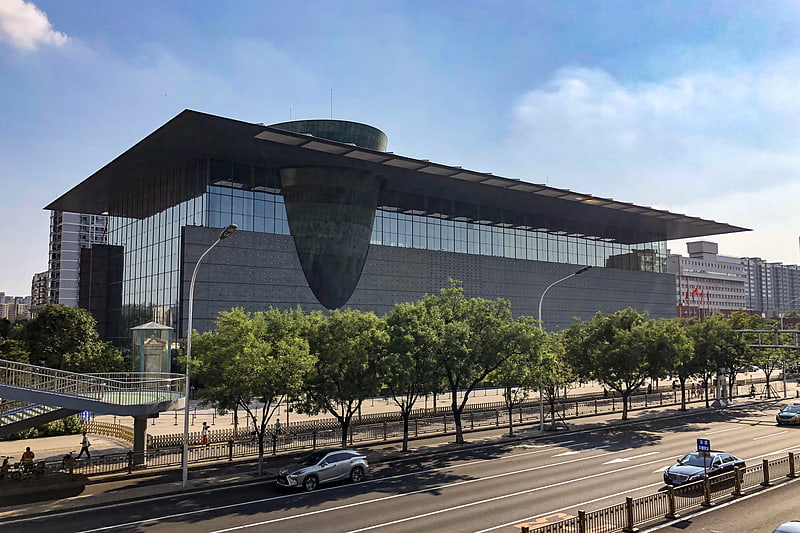
Also known as: 首都博物馆
Modern galleries of ancient artifacts. The Capital Museum is an art museum in Beijing, China. It opened in 1981 and moved into its present building in 2006, which houses a large collection of ancient porcelain, bronze, calligraphy, painting, jade, sculpture, and Buddhist statues from imperial China as well as other Asian cultures
Part of the museum's collections were formerly housed in the Confucius Temple on Guozijian Road in Beijing.[30]
Address: 16 Fuxingmen Outer St, 100000 北京市 (宣武区)
Prince Kung's Mansion
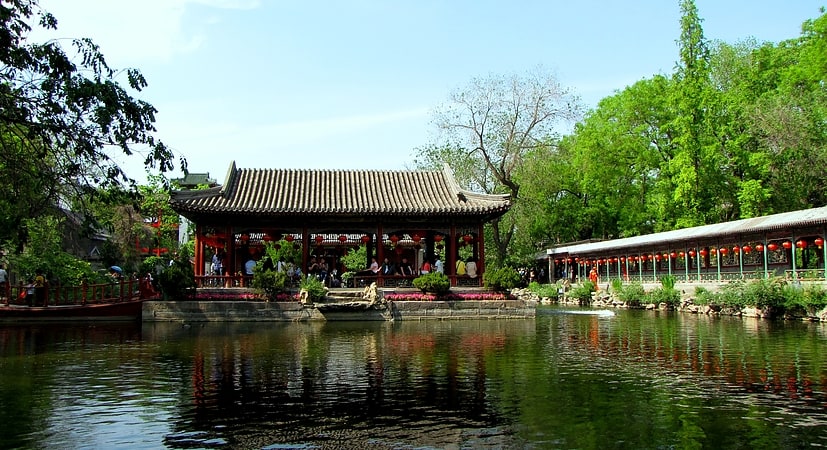
Also known as: 恭王府
Historic mansion with gardens and a museum. Prince Gong's Mansion, also known as the Prince Kung Mansion, is a museum and tourist attraction located in Xicheng District, Beijing, just north of the Shichahai Lake. It consists of large siheyuan-style mansions and gardens. Originally constructed for Heshen, an official highly favoured by the Qianlong Emperor, it was later renamed after Prince Gong, a Manchu prince and influential statesman of the late Qing dynasty, who inhabited the mansion in the late 19th century.[31]
Address: 17 Qianhai W St, 100009 北京市 (东城区)
Hall of Supreme Harmony
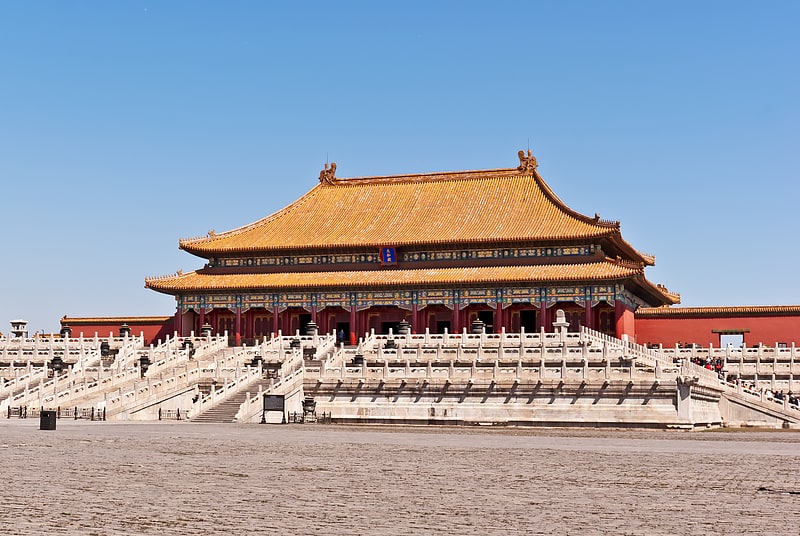
Also known as: 太和殿
Ming and Qing dynasty palace with a museum. The Hall of Supreme Harmony is the largest hall within the Forbidden City in Beijing, China. It is located at its central axis, behind the Gate of Supreme Harmony. Built above three levels of marble stone base, and surrounded by bronze incense burners, the Hall of Supreme Harmony is one of the largest wooden structures within China. It was the location where the emperors of the Ming and Qing dynasties hosted their enthronement and wedding ceremonies. The name of the Hall was changed several times throughout the past few centuries, from its initial Fengtian Dian, later to Huangji Dian in 1562 and to the current one by the Shunzhi Emperor of the Qing dynasty in 1645.
Together with the Hall of Central Harmony and Hall of Preserving Harmony, the three halls constitute the heart of the Outer Court of the Forbidden City.
The Hall of Supreme Harmony rises some 30 metres (98 ft) above the level of the surrounding square. It is the ceremonial center of imperial power, and the largest surviving wooden structure in China. It is eleven bays wide – with the main room being nine bays wide – and five bays deep, the numbers nine and five being symbolically connected to the majesty of the Emperor. The six pillars nearest the imperial throne are covered with gold, and the entire area is decorated with a dragon motif. The Dragon Throne, in particular, has five dragons coiled around the back and handrests. The screen behind it features sets of nine dragons, again reflecting the "nine-five" symbolism. The Hall of Supreme Harmony features an exquisite throne made of red sandalwood, and formerly used by the emperors of the Qing dynasty.
Set into the ceiling directly above the throne is an intricate caisson decorated with a coiled dragon, from the mouth of which issues a chandelier-like set of metal balls, called the "Xuanyuan Mirror", a reference to the Yellow Emperor, a mythological Chinese ruler. According to legend, the metal balls will fall and strike dead any usurper to the throne.
In the Ming dynasty, the emperors held court here to discuss affairs of state. During the Qing dynasty, emperors held court far more frequently. As a result, the location was changed to the Inner Court, and the Hall of Supreme Harmony was only used for ceremonial purposes, such as enthronements, investitures, and imperial weddings.
The original hall was built in 1421 during the Ming dynasty, destroyed seven times by fires during the Qing dynasty, and rebuilt for the last time in 1695–1697. After a reconstruction in the 16th century, the dimensions of the hall were reduced from around 95 by 48 metres (312 ft × 157 ft) to its present measurements, 65 by 37 metres (213 ft × 121 ft). Inability to find sufficiently large logs was cited as the cause for this change.[32]
Address: 4 Jingshan Front St, Beijing (东城区)
Palace of Tranquil Longevity
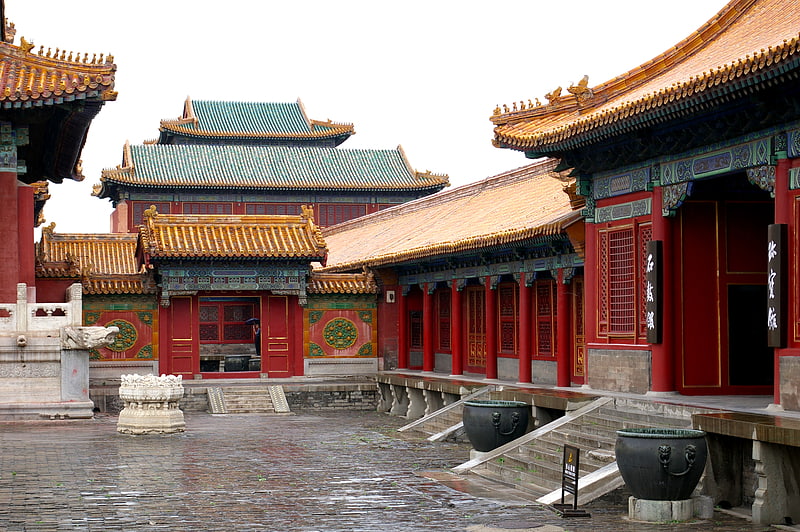
Also known as: 宁寿宫
Tourist attraction in Beijing, China. The Palace of Tranquil Longevity, literally, "peaceful old age palace," also called the Qianlong Garden, Qianlong Palace, Qianlong District or the Palace of Tranquility and Longevity, is a palace in Beijing, China, located in the northeast corner of the Inner Court of the Forbidden City.
Construction of the palace began on the Qianlong Emperor's orders in 1771, in preparation for his retirement, although the emperor himself never moved into the palace. Its beautiful apartments, pavilions, gates and gardens feature "some of the most elegant spaces at a time widely considered to be the pinnacle of Chinese interior design." Throughout the Qing dynasty, the palace was almost never used, largely because of the Qianlong Emperor's imperial decree ordering his retirement retreat remain unaltered.[33]
Beijing World Park

Also known as: 北京世界公园
Theme park in Beijing, China. Beijing World Park is a theme park that attempts to give visitors the chance to see the world without having to leave Beijing. The park covers 46.7 hectares and is located in the southwestern Fengtai District of Beijing. It is about 17 km from Tiananmen, the City center, and 40 km from the Capital International Airport. The park opened in 1993 and is estimated to receive 1.5 million visitors annually.[34]
Address: 158 Dabaotai, 100070 北京市 (丰台区)
Kunming Lake
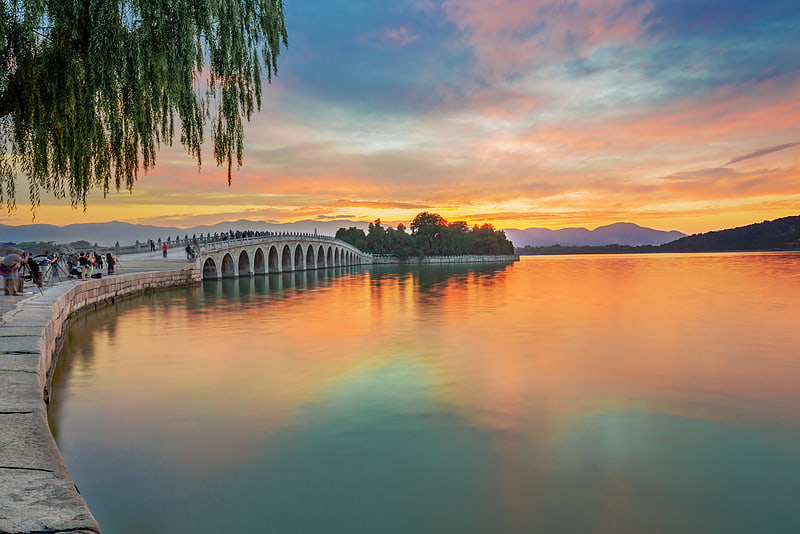
Also known as: 昆明湖
Lake in China. Kunming Lake is the central lake on the grounds of the Summer Palace in Beijing, China. Together with the Longevity Hill, Kunming Lake forms the key landscape features of the Summer Palace gardens.
With an area of 2.2 km2 (0.8 sq mi), Kunming Lake covers approximately three-quarters of the Summer Palace grounds. It is quite shallow, with an average depth of only 1.5 meters (5 ft).[35]